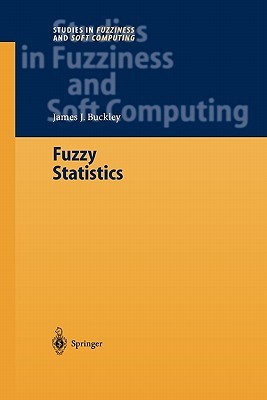
- We will send in 10–14 business days.
- Author: James J Buckley
- Publisher: Springer
- ISBN-10: 3642059244
- ISBN-13: 9783642059247
- Format: 15.6 x 23.4 x 1 cm, minkšti viršeliai
- Language: English
- SAVE -10% with code: EXTRA
Reviews
Description
1. 1 Introduction This book is written in four major divisions. The first part is the introductory chapters consisting of Chapters 1 and 2. In part two, Chapters 3-11, we develop fuzzy estimation. For example, in Chapter 3 we construct a fuzzy estimator for the mean of a normal distribution assuming the variance is known. More details on fuzzy estimation are in Chapter 3 and then after Chapter 3, Chapters 4-11 can be read independently. Part three, Chapters 12- 20, are on fuzzy hypothesis testing. For example, in Chapter 12 we consider the test Ho: /1 = /10 verses HI: /1 f=- /10 where /1 is the mean of a normal distribution with known variance, but we use a fuzzy number (from Chapter 3) estimator of /1 in the test statistic. More details on fuzzy hypothesis testing are in Chapter 12 and then after Chapter 12 Chapters 13-20 may be read independently. Part four, Chapters 21-27, are on fuzzy regression and fuzzy prediction. We start with fuzzy correlation in Chapter 21. Simple linear regression is the topic in Chapters 22-24 and Chapters 25-27 concentrate on multiple linear regression. Part two (fuzzy estimation) is used in Chapters 22 and 25; and part 3 (fuzzy hypothesis testing) is employed in Chapters 24 and 27. Fuzzy prediction is contained in Chapters 23 and 26. A most important part of our models in fuzzy statistics is that we always start with a random sample producing crisp (non-fuzzy) data.
EXTRA 10 % discount with code: EXTRA
The promotion ends in 22d.15:30:36
The discount code is valid when purchasing from 10 €. Discounts do not stack.
- Author: James J Buckley
- Publisher: Springer
- ISBN-10: 3642059244
- ISBN-13: 9783642059247
- Format: 15.6 x 23.4 x 1 cm, minkšti viršeliai
- Language: English English
1. 1 Introduction This book is written in four major divisions. The first part is the introductory chapters consisting of Chapters 1 and 2. In part two, Chapters 3-11, we develop fuzzy estimation. For example, in Chapter 3 we construct a fuzzy estimator for the mean of a normal distribution assuming the variance is known. More details on fuzzy estimation are in Chapter 3 and then after Chapter 3, Chapters 4-11 can be read independently. Part three, Chapters 12- 20, are on fuzzy hypothesis testing. For example, in Chapter 12 we consider the test Ho: /1 = /10 verses HI: /1 f=- /10 where /1 is the mean of a normal distribution with known variance, but we use a fuzzy number (from Chapter 3) estimator of /1 in the test statistic. More details on fuzzy hypothesis testing are in Chapter 12 and then after Chapter 12 Chapters 13-20 may be read independently. Part four, Chapters 21-27, are on fuzzy regression and fuzzy prediction. We start with fuzzy correlation in Chapter 21. Simple linear regression is the topic in Chapters 22-24 and Chapters 25-27 concentrate on multiple linear regression. Part two (fuzzy estimation) is used in Chapters 22 and 25; and part 3 (fuzzy hypothesis testing) is employed in Chapters 24 and 27. Fuzzy prediction is contained in Chapters 23 and 26. A most important part of our models in fuzzy statistics is that we always start with a random sample producing crisp (non-fuzzy) data.


Reviews